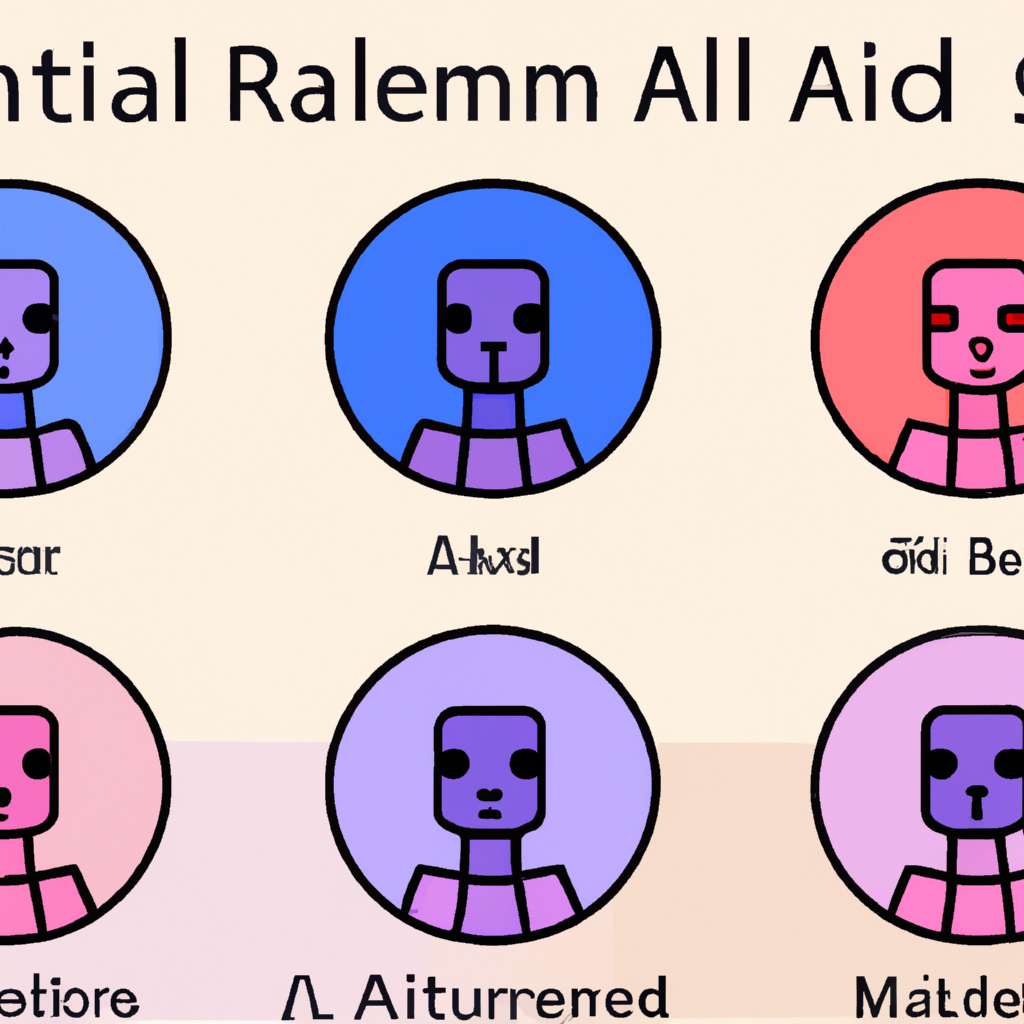-
Table of Contents
- Introduction
- Exploring the Different Types of AI: From Rule-Based to Self-Learning
- How Rule-Based AI Differs from Self-Learning AI
- The Benefits of Self-Learning AI Over Rule-Based AI
- The Challenges of Implementing Self-Learning AI
- The Future of AI: What Does the Future Hold for Rule-Based and Self-Learning AI?
- Conclusion
“Unlock the Power of AI: Explore the Different Types of AI and Discover What They Can Do For You!”
Introduction
Artificial Intelligence (AI) is a rapidly growing field of technology that has the potential to revolutionize the way we interact with the world. AI is a broad term that encompasses a variety of different types of systems, from rule-based systems to self-learning systems. Each type of AI has its own unique advantages and disadvantages, and understanding the differences between them can help you decide which type of AI is best suited for your needs. In this article, we will explore the different types of AI, from rule-based systems to self-learning systems, and discuss the advantages and disadvantages of each.
Exploring the Different Types of AI: From Rule-Based to Self-Learning
Welcome to the world of Artificial Intelligence (AI)! AI is a rapidly growing field of technology that is transforming the way we live and work. From self-driving cars to virtual assistants, AI is becoming increasingly prevalent in our lives.
In this article, we’ll explore the different types of AI and how they work. We’ll start with the most basic type of AI, rule-based AI, and then move on to more advanced forms of AI such as self-learning AI. By the end of this article, you’ll have a better understanding of the different types of AI and how they can be used.
Rule-based AI is the most basic type of AI. It is based on a set of predetermined rules that are programmed into the system. This type of AI is used to automate simple tasks such as sorting data or recognizing patterns. Rule-based AI is often used in applications such as facial recognition or voice recognition.
The next type of AI is machine learning. This type of AI uses algorithms to learn from data and make predictions. Machine learning algorithms are used in a variety of applications such as image recognition, natural language processing, and autonomous vehicles.
The most advanced type of AI is self-learning AI. This type of AI uses deep learning algorithms to learn from data and make decisions without any human intervention. Self-learning AI is used in applications such as autonomous vehicles, medical diagnosis, and natural language processing.
We hope this article has given you a better understanding of the different types of AI and how they work. AI is a rapidly growing field of technology that is transforming the way we live and work. From self-driving cars to virtual assistants, AI is becoming increasingly prevalent in our lives.
How Rule-Based AI Differs from Self-Learning AI
Rule-based AI and self-learning AI are two distinct types of artificial intelligence (AI) that are used to solve different types of problems. Rule-based AI is a type of AI that relies on a set of predetermined rules to make decisions and solve problems. This type of AI is often used in applications where the rules are well-defined and the environment is relatively static. Self-learning AI, on the other hand, is a type of AI that is able to learn from its environment and adapt to changing conditions. This type of AI is often used in applications where the environment is dynamic and the rules are not well-defined.
The main difference between rule-based AI and self-learning AI is the way in which they make decisions. Rule-based AI relies on a set of predetermined rules to make decisions, while self-learning AI is able to learn from its environment and adapt to changing conditions. Rule-based AI is often used in applications where the rules are well-defined and the environment is relatively static, while self-learning AI is often used in applications where the environment is dynamic and the rules are not well-defined.
Rule-based AI is often used in applications such as medical diagnosis, where the rules are well-defined and the environment is relatively static. Self-learning AI, on the other hand, is often used in applications such as robotics, where the environment is dynamic and the rules are not well-defined.
In conclusion, rule-based AI and self-learning AI are two distinct types of artificial intelligence that are used to solve different types of problems. Rule-based AI relies on a set of predetermined rules to make decisions, while self-learning AI is able to learn from its environment and adapt to changing conditions. Both types of AI have their own advantages and disadvantages, and the choice of which type to use depends on the specific application.
The Benefits of Self-Learning AI Over Rule-Based AI
Self-learning Artificial Intelligence (AI) has become increasingly popular in recent years, and for good reason. Self-learning AI offers a number of advantages over rule-based AI, making it a great choice for many applications. Here are some of the benefits of self-learning AI over rule-based AI.
1. Self-learning AI is more adaptive. Self-learning AI systems are able to learn from their environment and adapt to changing conditions. This means that they can quickly adjust to new situations and respond to changes in the environment. This makes them much more flexible and able to handle a wider range of tasks than rule-based AI.
2. Self-learning AI is more efficient. Self-learning AI systems are able to learn from their mistakes and improve their performance over time. This means that they can become more efficient and accurate as they gain experience. This makes them much more cost-effective than rule-based AI, which requires manual programming and maintenance.
3. Self-learning AI is more accurate. Self-learning AI systems are able to learn from their mistakes and improve their accuracy over time. This means that they can become more accurate and reliable than rule-based AI, which relies on manual programming and maintenance.
4. Self-learning AI is more reliable. Self-learning AI systems are able to learn from their mistakes and improve their reliability over time. This means that they can become more reliable and dependable than rule-based AI, which relies on manual programming and maintenance.
Overall, self-learning AI offers a number of advantages over rule-based AI. It is more adaptive, efficient, accurate, and reliable, making it a great choice for many applications. If you’re looking for an AI system that can quickly adapt to changing conditions and improve its performance over time, self-learning AI is the way to go.
The Challenges of Implementing Self-Learning AI
Self-learning Artificial Intelligence (AI) is a rapidly growing field of technology that has the potential to revolutionize the way we interact with machines. However, implementing self-learning AI is not without its challenges. In this article, we will discuss some of the most common challenges associated with implementing self-learning AI.
One of the biggest challenges of implementing self-learning AI is the need for large amounts of data. Self-learning AI systems require large datasets to learn from in order to become more accurate and efficient. This can be difficult to obtain, as it requires a lot of time and resources to collect and organize the data. Additionally, the data must be of high quality in order for the AI system to learn effectively.
Another challenge of implementing self-learning AI is the need for a powerful computing system. Self-learning AI systems require powerful computers to process the large amounts of data they are given. This can be expensive and difficult to obtain, as powerful computers are not always readily available.
Finally, self-learning AI systems require a lot of time and effort to maintain. As the AI system learns, it must be monitored and adjusted in order to ensure that it is learning correctly and efficiently. This requires a lot of time and effort, as well as a deep understanding of the AI system and its capabilities.
Overall, implementing self-learning AI can be a difficult and time-consuming process. However, with the right resources and understanding, it can be a powerful tool that can revolutionize the way we interact with machines.
The Future of AI: What Does the Future Hold for Rule-Based and Self-Learning AI?
The future of AI is an exciting and ever-evolving field. As technology advances, so too does the potential of AI. In the coming years, we can expect to see a greater focus on both rule-based and self-learning AI.
Rule-based AI is a type of AI that follows a set of predetermined rules to complete tasks. This type of AI is often used in applications such as robotics, where the robot must follow a set of instructions to complete a task. In the future, we can expect to see rule-based AI become more sophisticated and able to complete more complex tasks.
Self-learning AI is a type of AI that is able to learn from its environment and experiences. This type of AI is often used in applications such as facial recognition, where the AI must be able to recognize patterns and make decisions based on its observations. In the future, we can expect to see self-learning AI become more advanced and able to make more accurate decisions.
The future of AI is an exciting field that will continue to evolve as technology advances. Both rule-based and self-learning AI will play an important role in the future of AI, and we can expect to see both types of AI become more sophisticated and capable of completing more complex tasks.
Conclusion
The Different Types of AI have come a long way in recent years, and the possibilities for AI are seemingly endless. From Rule-Based AI to Self-Learning AI, the potential for AI to revolutionize the way we live and work is immense. AI is already being used in a variety of industries, from healthcare to finance, and its potential to improve our lives is only just beginning to be realized. As AI continues to evolve, it will be interesting to see how it will shape our future.





